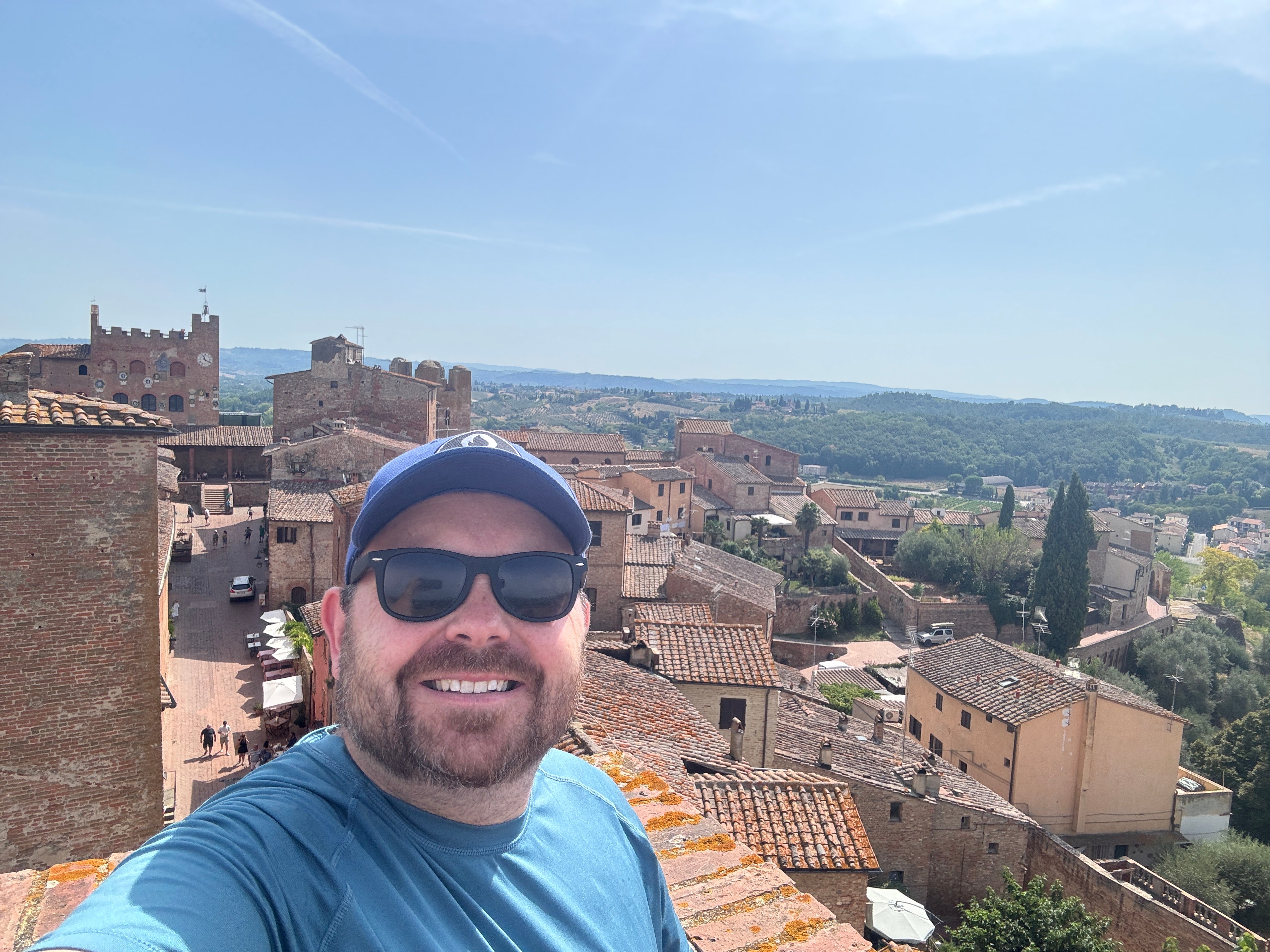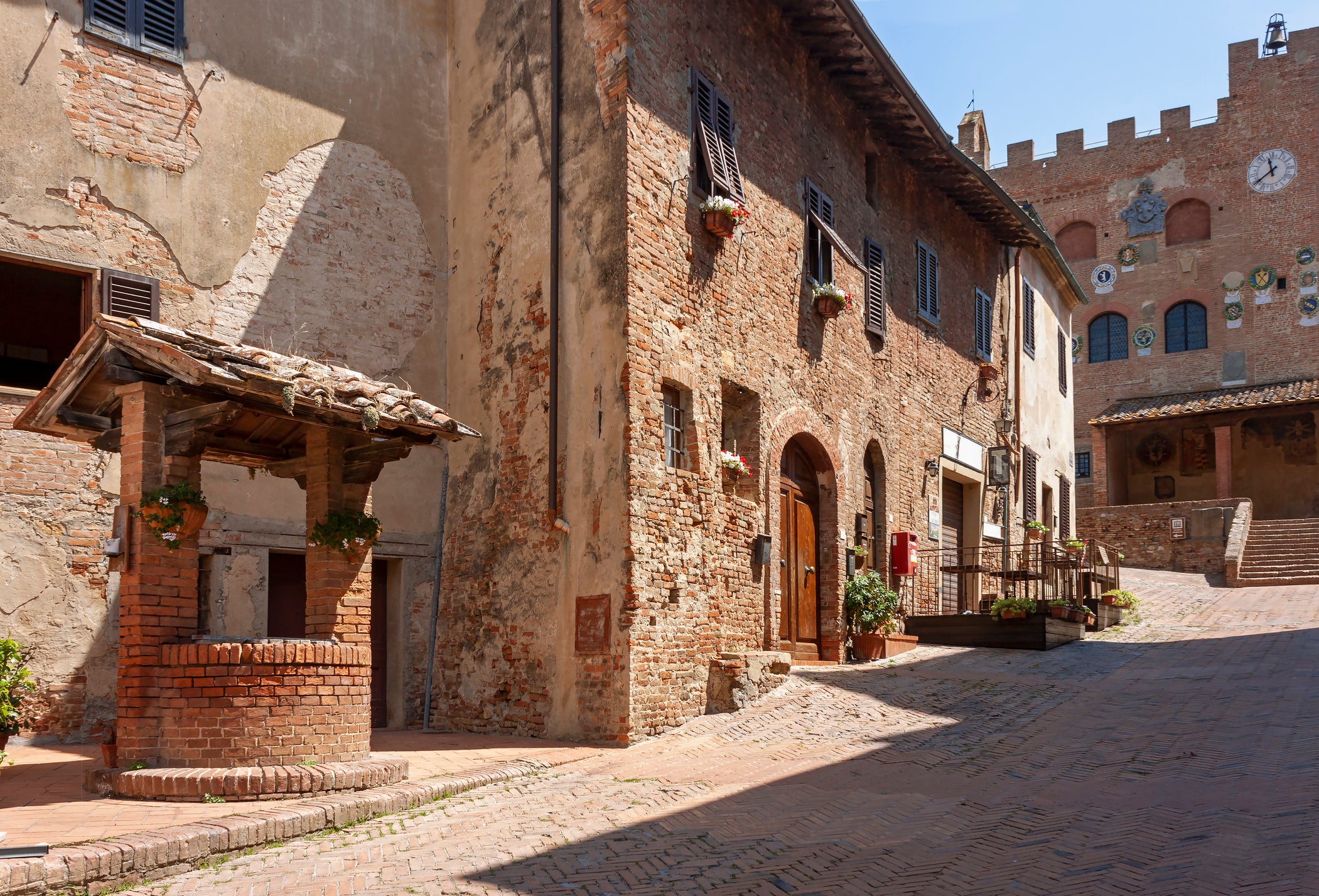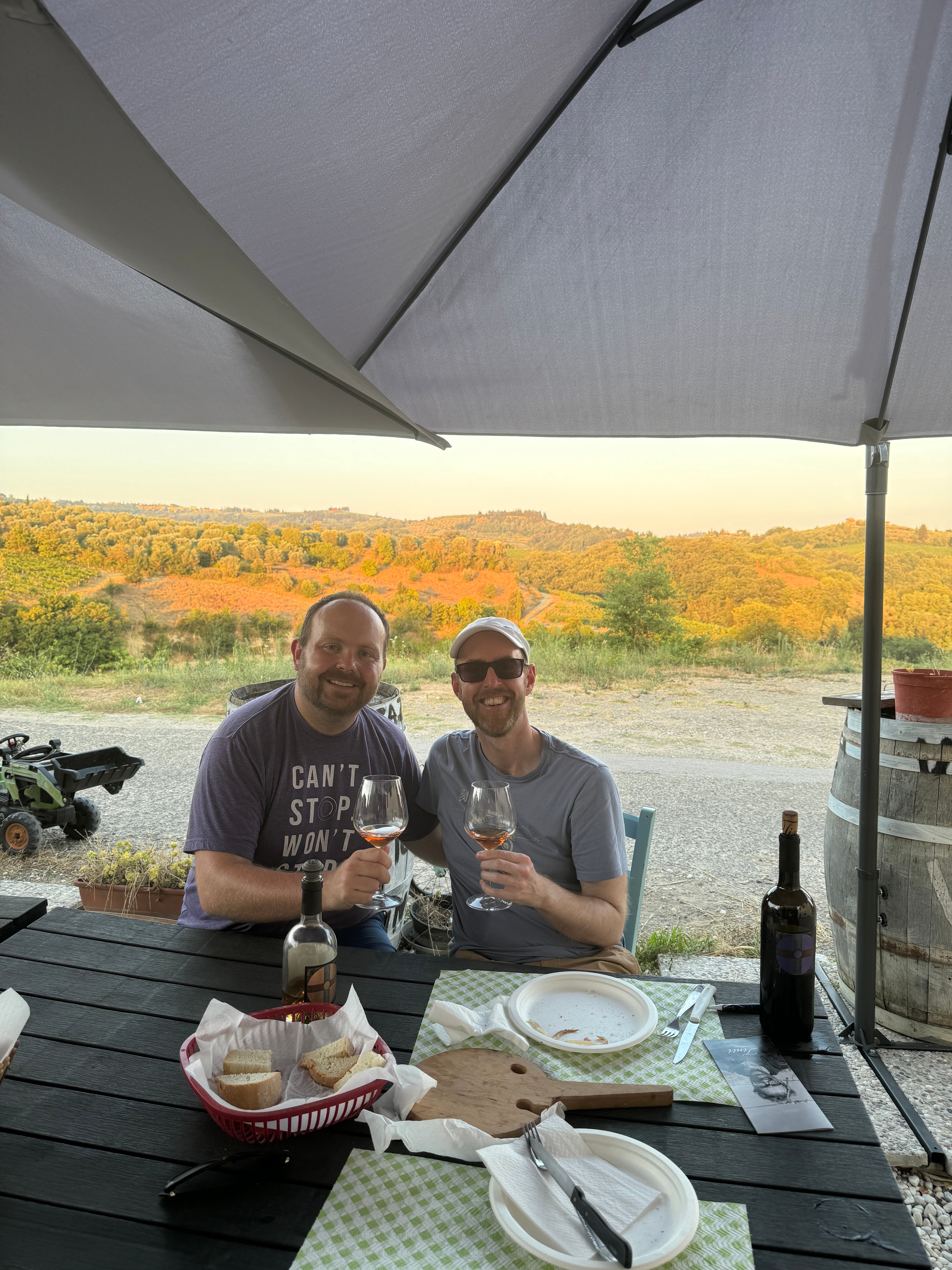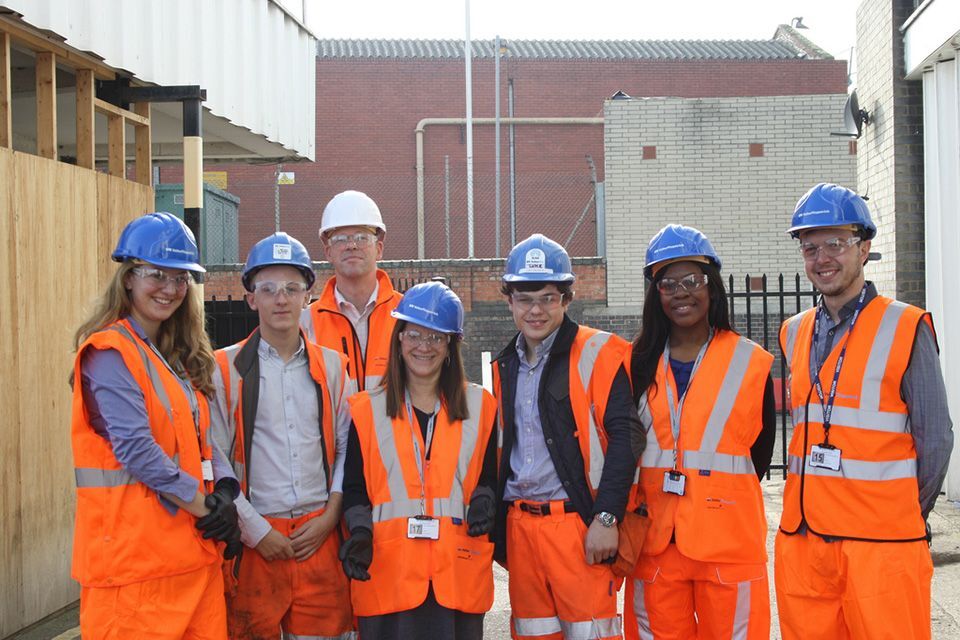There’s something not quite right, I realise, as my eyes scan the gelateria counter in Certaldo, a small Tuscan hilltop town.
“Vanilla, strawberry, pistachio… onion?!”
The server, who’s clearly seen this bemused reaction before, grins.
“Si,” she exclaims proudly. “È delizioso. Solo qui!”
Perhaps it’s “only here” for a reason – the gelato certainly leaves an unforgettable first impression. The sweet, sharp taste drawn from Certaldo’s signature ingredient elicits the Italian equivalent of a Marmite reaction. People either love or hate it.

Watch: How to escape the crowds on an Italy holiday
Certaldo doesn’t grace the cover of Tuscan guidebooks. In truth, it’s often overlooked altogether. But the walkable medieval streets, standout food, and views that go on forever make it my ideal Tuscan base.
The town also offers an antidote to Tuscany’s notorious summer traffic: a frequent train from Pisa, with one easy change, gets us there in under an hour – with direct routes from Siena and Florence, too. From the station, it’s just a two-minute walk and a short funicular ride to the old town, Certaldo Alto. We climb 200 metres and are deposited into the 14th century.
A living community
During my years coming to Certaldo, I’ve asked many locals what sets it apart from its more famous neighbours. The most common answer is that “people still live here”. Certaldo may look like a period drama set, but behind its shuttered windows, life quietly carries on.
The narrow lanes and crenellated skyline speak to Certaldo Alto’s heyday as a medieval hilltop stronghold. There’s no central piazza, just a weave of medieval streets winding up to the 12th century Palazzo Pretorio. Once home to the ruling podestà, or chief magistrate, it’s now a time capsule, complete with carved coats of arms and 600-year-old prisoner graffiti.

Read more: The coastal holiday city that Italy has been keeping a secret for years
It may look frozen in history, but every so often, Certaldo reminds you it’s very much alive.
As we settle into dinner one evening, a jazz band strikes up on the street outside. As the rhythm builds, couples peel away from their evening strolls like enchanted serpents, drawn to the sound. Doors swing wide and neighbours spill out, wine glasses in hand, calling greetings across the street.
Within minutes, Via Boccaccio becomes a stage: people are dancing, toasting and laughing, the music folding into the heat of the evening.
A very modern hero
Certaldo knows how to put on a show. In July, the old town is filled with street theatre; come October, Boccaccesca swaps spectacle for wine, truffles and live cooking, all in honour of local legend Giovanni Boccaccio. This year will be an extra special celebration, marking the 650th anniversary of his death.

Read more: Palazzo Ripetta, Rome hotel review
Author of The Decameron, Italy’s answer to The Canterbury Tales, Boccaccio remains ever-present. A Netflix adaptation recently revived his stories. His home, Casa di Boccaccio, now houses exhibits on his legacy, including a pair of his 700-year-old shoes.
Next door, his ornate grave marker sits inside the Church of Saints Jacopo and Filippo – installed five centuries after his death. “Probably took that long to carve it,” mutters a local behind me.
Povera with pride
Tuscan food was once dismissed as cucina povera – peasant cooking – for its seasonal ingredients and stubborn simplicity. The term is now a badge of honour, especially here.
On the tiny balcony of Osteria da Chichibio, beside the Palazzo Pretorio, we salivate over plates of silky pappardelle al cinghiale (wild boar). The chef periodically emerges from the kitchen to banter with his guests. The empty plates do most of the talking.

Read more: The best family-friendly hotels in Rome
When I ask the secret to his sauce, he gesticulates: “Never, ever garlic and onion together. This is not Naples.”
This being Certaldo, the choice here is – obviously – onion. When not being churned into gelato at Gelateria di Bracali Patrizia, it turns up in sauces, soups, pâtés, even jam, casually ignoring the traditional rulebook.
After dinner, here or at Ristorante L’Antica Fonte, where quail and sausage come with a valley view, we do as locals do: walk off the wine, and see where the evening passeggiata leads.
Only here
Under the Tuscan sun, time softens. We fall into a rhythm of late afternoon walks on the golden ridgeline around Certaldo, with the old town glowing like a storybook citadel in the distance.
We also make full use of public transport. An early train drops us in Siena’s Campo in time for a test run of the Palio horse race, all hairpin turns and kids cheering on their favourites like it’s Serie A. The next day, a train and bus combination gets us to the towers of San Gimignano. Florence follows, equally easy and with train fares cheaper than two pints in London.
On our final afternoon, we hire e-bikes (from £43 per day), making short work of the hills. We coast along cypress-lined roads to the Balze, a brittle tangle of eroded cliffs, more Sierra Nevada than central Tuscany.
On the way back, a handwritten sign – degustazione di vini – stops us in our tracks. Daniele, a fourth-generation winemaker, appears from behind the vines to greet us.

Read more: The best cheap hotels in Rome
Over generous pours and plates of bread, prosciutto and oil, he talks us through his vineyard, Tintichianti. The grapes are still harvested by hand each September. His father, in his late 70s, works beside him, darting between tables with the energy of someone half his age but twice as caffeinated.
Daniele catches our look, grins and shrugs: “Il vino fa buon sangue.” Good wine makes good blood.
“Solo qui,” adds Daniele, gesturing toward the vines, the bottle, and his father sprinting uphill with a corkscrew.
Only here.
How to do it:
The frequent direct train from Florence takes 55 mins, from €6.90 (£6) one-way, and Siena is just 35 mins, from €5 (£4.30), to Certaldo. From Pisa, change at Empoli, which takes 65 mins, and costs from €8.40 (£7.30). Timetables and tickets are available on the Trenitalia.
Ryanair flies from London Stansted to Pisa, starting at £33 return. Flights take roughly two hours.
Where to stay:
The elegant Hotel Certaldo sits in the lower town, complete with pool, gym, and spacious garden. From £130 per night.
Or stay at Albergo Il Castello, which offers nine peaceful rooms in a former castle, with a garden restaurant and live jazz. Rooms start at £115 per night.
Book here



